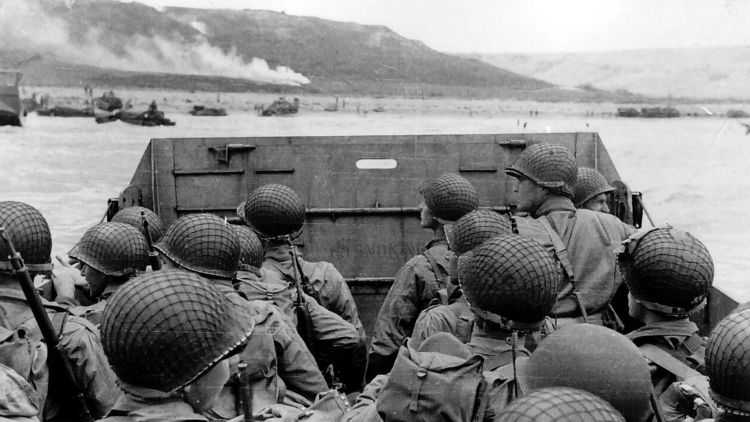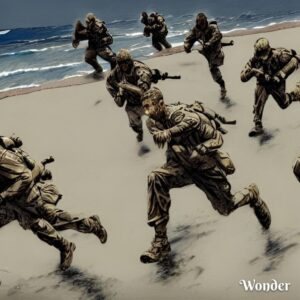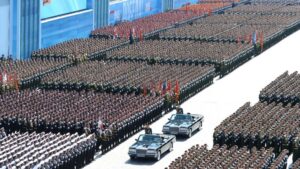Looking back at the events that led up to the Second World War, it’s easy to see that the world was barreling toward disaster long before the first shot was fired.
The political, social, and economic unrest in the 1920s and 1930s made the second great conflict of the 20th century feel inevitable.
What’s even more unsettling is how some of the signs from that era are reappearing today in a world that, while vastly different, still faces the prospect of geopolitical tensions boiling over.
So, what were the warning signs that a world-shaking war was on the horizon, and what lessons can we learn from them? And more importantly, how do today’s tensions echo those from the past? Let’s take a closer look.
Signs of a Looming Conflict
Warning Sign #1:| The Rise of Nationalism and Authoritarianism
One of the most obvious precursors to World War II was the rise of nationalism and authoritarian regimes across Europe.
After the Treaty of Versailles ended World War I, many countries were left dealing with the aftermath of economic and social instability.
Germany, in particular, suffered greatly under the harsh terms of the treaty, leading to widespread resentment and the eventual rise of Adolf Hitler and the Nazi Party.
Hitler played into the German people’s desire for national pride and revenge, promising to rebuild the country and restore its former glory.
At the same time, countries like Italy under Benito Mussolini and Japan under its militaristic government were also leaning into authoritarianism, focusing on expansion and aggression as a means of asserting power.
Adolf Hitler, at a window of the Reich Chancellery, stands before the crowd on the evening of his inauguration as chancellor, January 30, 1933. (Wikimedia Commons)
Comparisons to Today: While the world is very different now, nationalism and authoritarianism are on the rise again in various parts of the globe.
Countries like Russia, under Vladimir Putin, have displayed similar tendencies to flex their muscles in an effort to reclaim past power. In recent years, China has also grown increasingly assertive in its ambitions, particularly in the South China Sea and Taiwan.
In both cases, nationalism is a key driver, with leaders appealing to historical grievances and a desire to restore perceived greatness.
Sign #2 | Economic Instability and Global Depression
The Great Depression of the 1930s was another major factor that contributed to the outbreak of World War II.
After the 1929 stock market crash, economies around the world were in turmoil. Unemployment was skyrocketing, and people were desperate. Economic instability breeds extremism, and in Europe, it led to the rise of radical ideologies that promised solutions—namely fascism and communism.
Germany, still reeling from the heavy reparations imposed by the Treaty of Versailles, was hit particularly hard.
The Weimar Republic struggled to maintain control, and Hitler used the chaos to his advantage, blaming the country’s problems on scapegoats like the Jews and communists.
Meanwhile, Japan, seeking resources to fuel its industrial expansion, embarked on a campaign of aggression throughout Asia, seeing conflict as a way to solve its economic woes.
Unemployed people lined up outside a soup kitchen in Chicago during the Great Depression circa the late 1920s. (National Archives/Wikimedia Commons)
Comparisons to Today: Today, while we aren’t facing a global depression on the scale of the 1930s, we are dealing with significant economic instability. The COVID-19 pandemic disrupted economies worldwide, and we’re still feeling the aftershocks, from inflation to supply chain issues.
Additionally, the war in Ukraine has exacerbated economic tensions, particularly in Europe, where energy supplies are being weaponized.
The rising cost of living, job uncertainty, and income inequality are all contributing to a sense of dissatisfaction, which in turn fuels political extremism in many countries.
Sign #3 | Expansionist Aggression
Perhaps the most direct comparison between the pre-World War II era and today is the expansionist aggression we’re seeing from some world powers.
In the 1930s, Germany, Italy, and Japan were all aggressively expanding their territories. Germany’s annexation of Austria and the Sudetenland in Czechoslovakia, Italy’s invasion of Ethiopia, and Japan’s occupation of Manchuria were all signs of nations pushing the boundaries and testing the resolve of the international community.
Each time these aggressions were met with appeasement—the infamous policy championed by British Prime Minister Neville Chamberlain—the aggressors only grew bolder.
Hitler’s Germany, in particular, was emboldened by the lack of meaningful consequences, which ultimately led to the full-scale invasion of Poland in 1939, triggering World War II.
Screenshot. Russian President Putin announced a “special military operation” on Ukraine on February 24, 2022. (Wikimedia Commons)
Comparisons to Today: Fast forward to today, and we see similar patterns of expansionist aggression.
Russia’s annexation of Crimea in 2014, followed by its full-scale invasion of Ukraine in 2022, mirrors some of the aggressive moves made by the Axis powers in the 1930s. The international response—sanctions and military aid to Ukraine—has certainly been stronger than the appeasement of the past, but there is still an undercurrent of concern about whether more could or should be done.
In Asia, China’s territorial claims in the South China Sea and its increasing pressure on Taiwan are raising alarms. The global community is watching closely, hoping that history doesn’t repeat itself in the form of another major conflict.
Sign #4 | Weak International Institutions
Before World War II, the world had the League of Nations, an international organization created to prevent future conflicts. Unfortunately, it was ineffective in stopping aggression and lacked the authority or power to enforce its resolutions.
Countries like Germany, Italy, and Japan simply ignored its mandates, knowing there would be no real consequences.
Comparisons to Today: Today, we have the United Nations (UN), an organization built with the lessons of the League of Nations in mind. While the UN has had some successes, it faces its own challenges. The Security Council, in particular, often finds itself deadlocked, especially when major powers like Russia or China are involved.
The NATO-Russia Council meets to discuss the 2021–2022 Russo-Ukrainian crisis, January 12, 2022. (State Department/Wikimedia Commons)
For example, Russia, as a permanent member of the Security Council, holds veto power, which complicates efforts to pass resolutions addressing its aggression in Ukraine. In some ways, this reflects the weaknesses of the League of Nations, raising concerns about the ability of international institutions to maintain peace in the face of global tensions.
Are We Heading Toward an Inevitable Conflict?
While it’s easy to see the parallels between the events leading up to World War II and today’s geopolitical tensions, it’s important to remember that history doesn’t have to repeat itself.
Today’s world is more interconnected than ever, and we benefit from hindsight. The lessons of the 1930s should remind us of the importance of diplomacy, accountability, and unity in the face of aggression. However, that’s just me being optimistic. Clearly, the signs are here.
Nationalism, economic instability, expansionist aggression, and weak international institutions are all factors that contributed to the outbreak of World War II, and they’re present in some form today.
The key question now is whether the global community will learn from the past and take action to prevent history from repeating itself—or whether we’re heading down a familiar and dangerous path.
“The price of freedom is eternal vigilance.”
— Thomas Jefferson
—
Disclaimer: SOFREP utilizes AI for image generation and article research. Occasionally, it’s like handing a chimpanzee the keys to your liquor cabinet. It’s not always perfect and if a mistake is made, we own up to it full stop. In a world where information comes at us in tidal waves, it is an important tool that helps us sift through the brass for live rounds.



